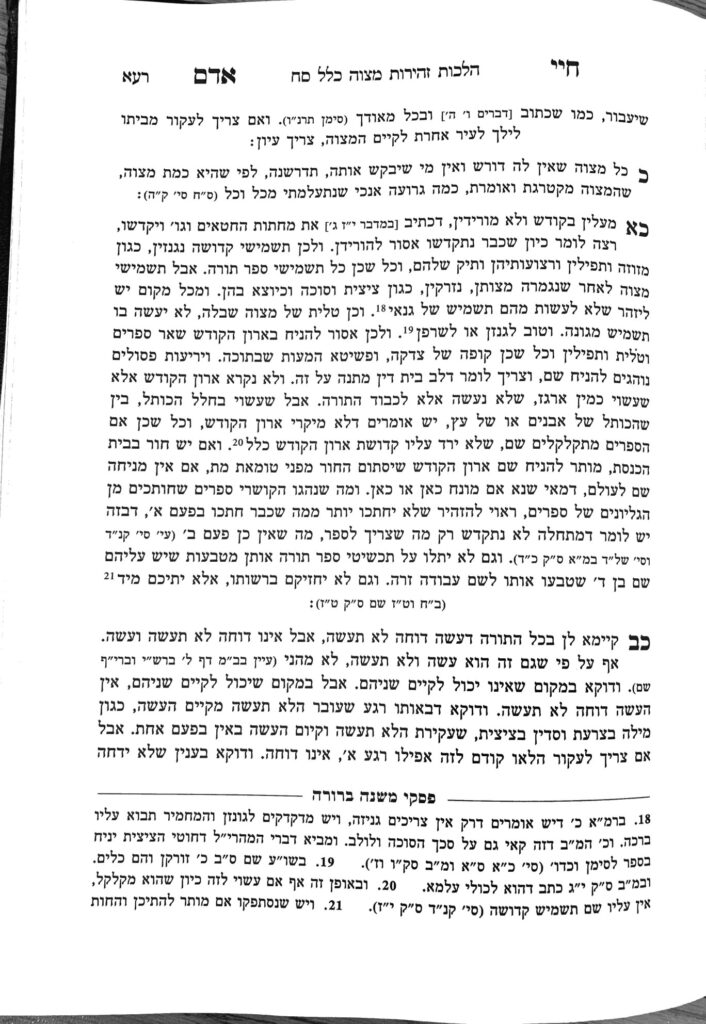We are continuing in siman 21, discussing the halachos of geniza. It is clear from the Gemara in Megillah (21b) that a Sefer Torah which is worn out is buried in an earthenware vessel. The Gemara bases this practice on the pasuk which says le’maan ya’amdu yamim rabbim, that the item should last for a long time. An example is the Dead Sea scrolls, which were found in earthenware vessels. We see that the goal of geniza is to protect the item, rather than that it should wear out.
The poskim discuss whether there is a chiyuv to specifically bury the item, or whether keeping it in a safe place is sufficient. The consensus seems to be that keeping the item in a safe place is sufficient. Therefore, when people wanted to display worn out Sifrei Torah from the Holocaust to demonstrate the evil of the Nazis, Rav Moshe paskened it is muttar, because the displays in which they are kept are certainly safe places for the items. (Worn out is defined as where the cost to fix the Sefer Torah is greater than the cost to buy a new one). Similarly, keeping the Sefer Torah in the aron kodesh (with an indication that it can no longer be used for kriyas hatorah) is a way to keep it safe.
The use of an earthenware vessel is not specific; if one has another material which will be equally or more sturdy they may use it instead.
The Mishnah Berurah (in siman 154) writes that this form of geniza is not limited to Sifrei Torah, but includes neviim, kesuvim, tefillin and mezuzos. People tend to mistakenly mix shaimos together, and place tefillin and mezuzos together with items which do not require earthenware (which we will discuss below).
In many places in America, a human casket is required to be surrounded by a concrete box when placed underground. If the tefillin, mezzuzah or sefer tanach is placed in such a kever, it is equivalent to earthenware.
The Gemara says that tashmishei kedusha require geniza as well. Tashmishei kedusha refer to items which in some way have direct contact, or help maintain, the kedusha item. This includes the cover of a sefer torah, a mezuzah cover, tefillin bags, and so on. There is no concern for the destruction of Hashem’s name with these items, so the purpose of geniza is along the lines of the Chazon Ish (shiur 1460), that it is inappropriate for such items to be treated with bizayon. When these items are placed in geniza, they do not have to be placed in earthenware, but they are disposed of in a way that they should last.
Nowadays, these items are generally buried in thick plastic bags. Rav Elyashiv and others have pointed out animals eat the cellulose found in paper, so these items must be buried in a plastic thick enough that animals are not attracted to it, or deep enough that animals cannot get to it. Practically, it can be hard to know how deep they should be buried, so generally they are buried in thick plastic.
Summary
- The goal of geniza is to protect the item for as long as possible.
- If they are buried, sifrei tanach, tefillin and mezuzos are placed in earthenware containers. However, they do not need to be buried, per se, and any safe place is a sufficient geniza for them.
- Tashmishei kedusha require geniza as well, but do not need to be placed in earthenware. They are generally wrapped in thick plastic and buried.



